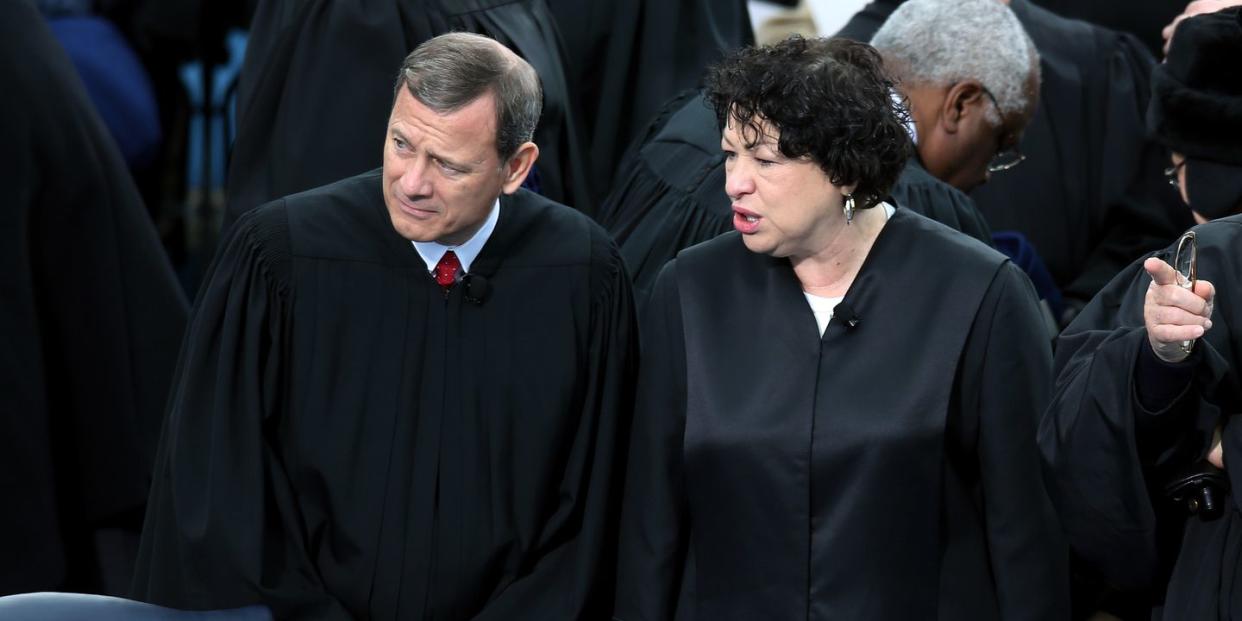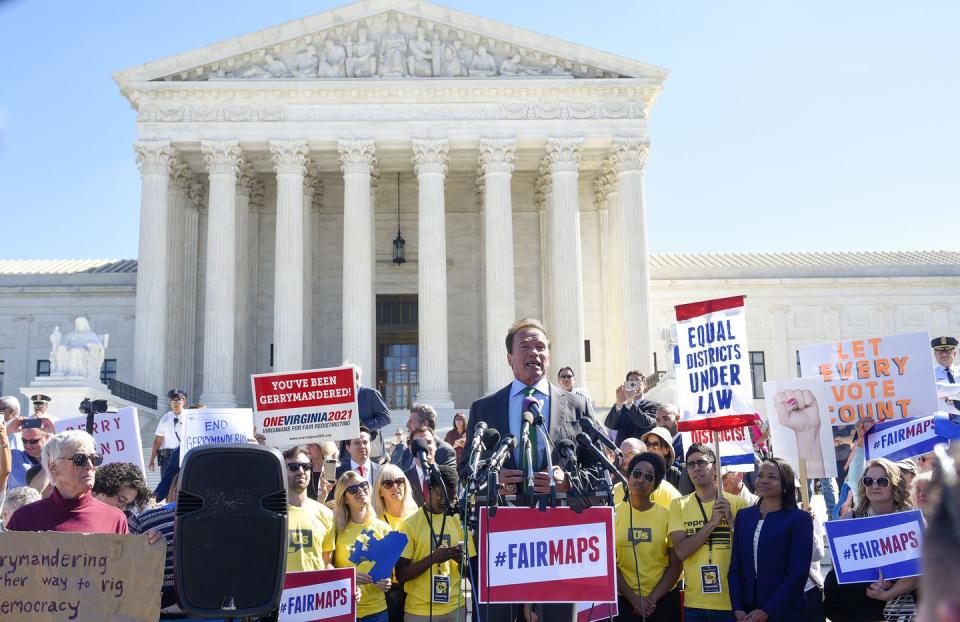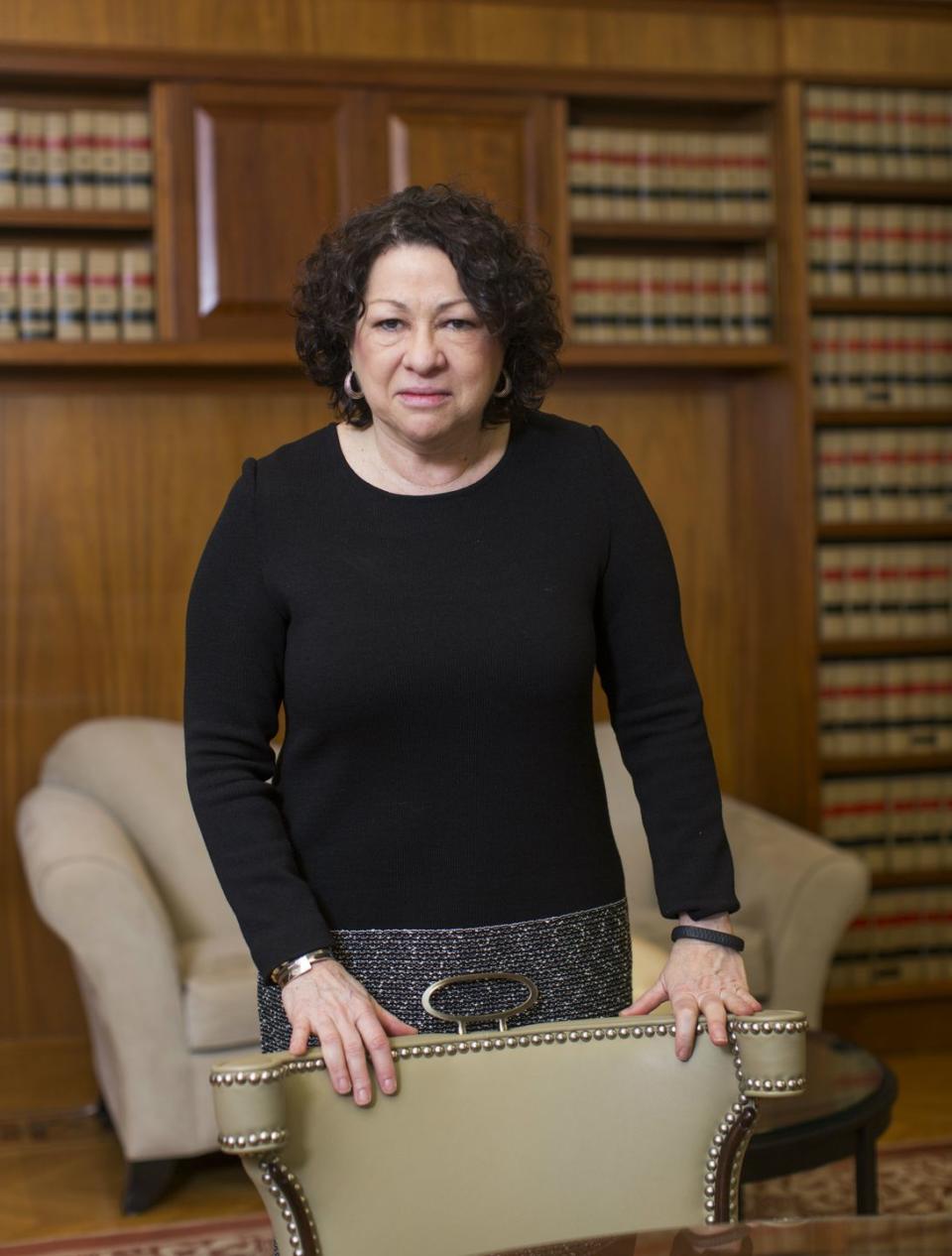The Supreme Court Rarely Acts Like This

WASHINGTON – Once again came the state of Texas before the Supreme Court, arguing over the validity and good faith with which its state legislature drew up its redistricting maps. It is not often that you see all nine justices of the Supreme Court affect the general mien of, “Christamighty, isn’t this fish dead yet?” (Boredom is often difficult to discern on Mr. Justice Thomas, but we’ll give him the benefit of the doubt.) Some brief background, then, before we get to Tuesday’s proceedings and how we came to them.
In 2011, as a result of the 2010 state elections and using the results of the 2010 census, and in keeping with the sudden Republican majorities that had been returned in a great number of states across, the country, the Texas legislature drew up a map designed to dilute the political power of the state’s rising minority populations. (In the first decade of the 21st century, Hispanics and African-Americans made up 90 percent of the state’s population growth. Something had to be done!)
A number of organizations advocating for these populations filed suit, claiming that the new map violated the 14th Amendment and also Section 2 of the Voting Rights Act. A three-judge panel agreed with the latter group, threw out the 2011 map, and wrote its own. Texas appealed to the Supreme Court, which ruled that the maps drawn up by the district court did not use appropriate standards and ordered the district court to draw up new maps using the legislature’s maps as a guide. The district court did as it was told and those maps were used in the 2012 elections.

In 2013, the state legislature adopted that last group of maps as a permanent solution. The activist groups, none of which arrived in Austin on turnip trucks, sued again, arguing that the adoption of the 2013 maps was an example of the legislation pretending to do what everybody knew it didn’t want to do.
In 2017, the district court agreed, saying that both the 2011 and 2013 maps were in violation of both the Constitution and the what is left of the VRA, and ruling that the unconstitutional provisions of the 2011 map were unchanged in the 2013 map. Texas appealed. Which is how the case ended up in the Supreme Court again.

In point of fact, it’s unclear whether or not the Supreme Court has any jurisdiction to settle this case at all. The plaintiffs in the case argue that the district court did not grant or deny an injunction regarding the maps and, therefore, according to federal law, the Supreme Court has nothing on which to rule, since its only prerogative in such matters is to rule on injunctions from the lower court. This was a point that Justice Sonia Sotomayor-with an assist from Justices Stephen Breyer and Elena Kagan-made clear right from the opening bell. Texas Solicitor General Scott Keller barely got a dependent clause out of his mouth before Sotomayor began grilling him on the jurisdictional issue.
“You just said the court ordered you to do something,” Sotomayor said. “The court basically said you can do something.”
Sotomayor’s interruption was prompted by Keller’s assertion that the legislature was “ordered” by the district court to draw new maps-or Keller maintained, be in contempt of that court. This got Breyer involved.
“You were not ‘ordered’ to do anything,” he told Keller. “Show me the piece of paper that says you were ordered to do something. If there is an injunction, there is a piece of paper that says you must do this or you can’t do that. If we accept your interpretation, then we’d be looking at 50,000 appeals a year on redistricting cases.”

This was one of only several redistricting cases the Court has taken on this year, and it has taken them on with almost universal reluctance. Nobody on the Court seems to relish being the nation’s redistricting cop-either for ideological or logistical reasons, or both. But the maps drawn up over the past decade by over-ambitious Republican state legislature have been so obviously and garishly finagled that the Court had no choice but to step in. This case was only the latest of them, and the emphasis on the jurisdictional nexus allowing the case to be heard at all, indicates, at least to me, that the Court is heartily sick of both this case and (perhaps) of this issue, as well.
In fact, the subtext of all of this-a deliberate, racially directed attempt to dilute minority political power, stubbornly insisted upon for almost a decade by the Republican legislative majorities in Texas-was primarily raised on Tuesday only by the Court’s conservatives, notably Justice Samuel Alito and Chief Justice John Roberts. Both of them poked and prodded the plaintiffs’ lawyers on whether or not the Texas legislature has been acting in good faith throughout this lengthy exercise. Neither Max Hicks nor Allison Ricks, appearing for the plaintiffs, were willing to rise to that bait, although both of them were quite clear in their belief that the adoption of the 2013 maps was part of a voter-dilution continuum that began in 2010.
It’s never over with these people. Ni shagu nazad.
You Might Also Like

